ARQUIFAUR Architecture and Urban fauna
Year | 2022-2024
Location | Alcalá de Henares (Spain)
Type | Research Project. ARQUIFAUR web. Citizen participation
Use | Multispecies City
Principal Investigator| Francisco García Triviño
Research team| Antonio Gómez Sal, Fernando Quesada López, Josabel Belliure Ferrer, Francisco Aguilera Benavente, Rosalina Montes Espín, Lara Sánchez Coterón, Luisa María Díaz Aranda, Víctor Ballesteros Mateos, Salvador Rebollo de la Torre, Ainara Cisneros Azpiazu, Emilio López-Galiacho Carrilero, Paula Victoria Álvarez.
Citizen participation| Ana González Torremocha, Beatriz Fernández Fernández, Edén Zamarreño Rebollo, Elena Alonso López, Francisco García Triviño, Gloria Torres Colmarejo, Gonzalo Cañas Dávila, María Jesús Salado, Ainara Cisneros Azpiazu, Miguel Ángel Letón, Noemi Álvarez Alonso, Rocío del Castillo, Rosalina Montes Espín, Víctor Ballesteros Mateos.
ARQUIFAUR is a research project that explores how birds become woven into the urban environment, navigating the space between the built and the living. It is a project that does NOT explore ecosystem services, but rather the services the city offers to birds. This creates a world of opportunities that incidentally provides a home for many other lives.
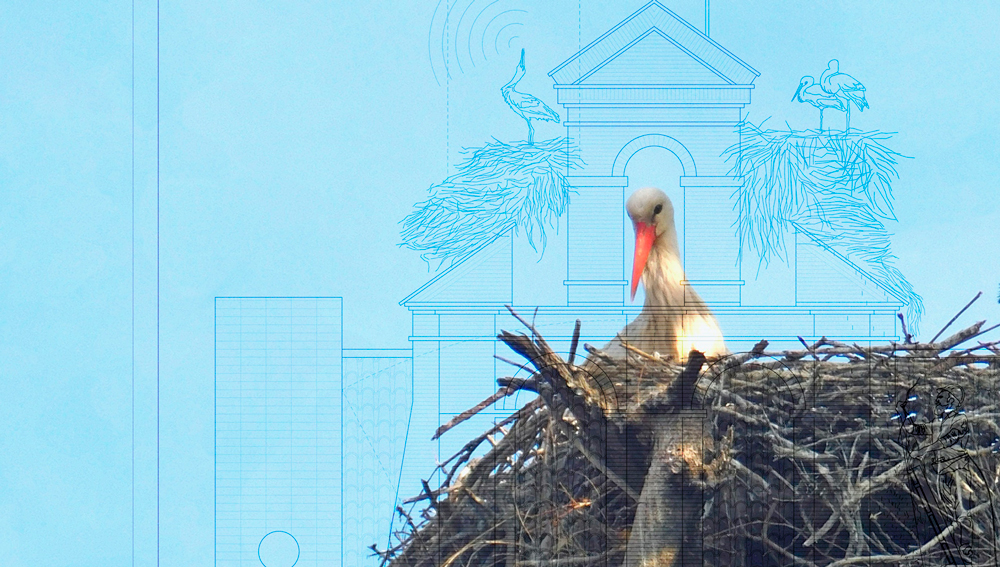
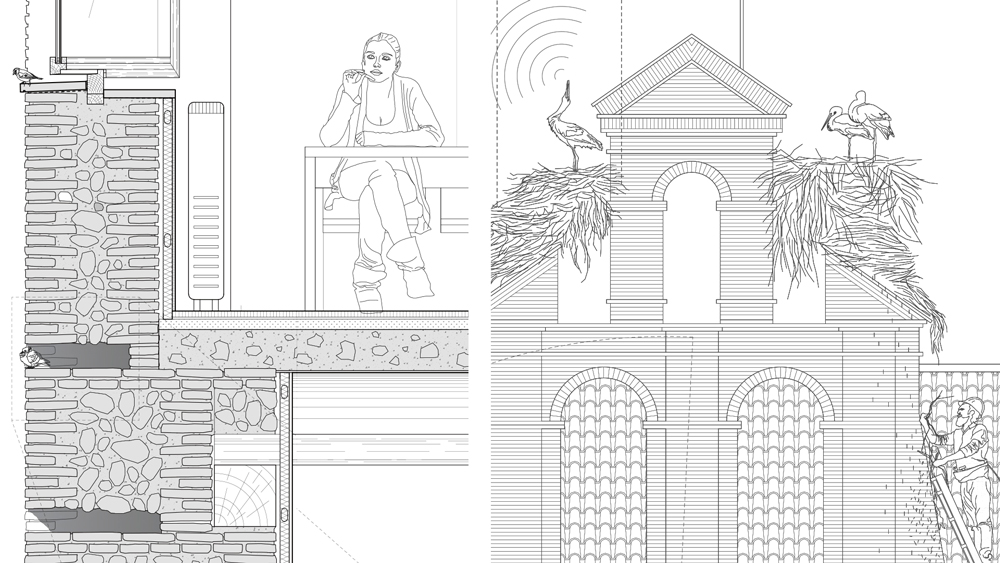
Alcalá is an urban ecosystem, a territory that serves as a stage for multiple lives. However, from our perspective, we sometimes forget this. Although we see it, we don’t observe it with enough attention to interpret, outline, and propose what those other life stories are like.
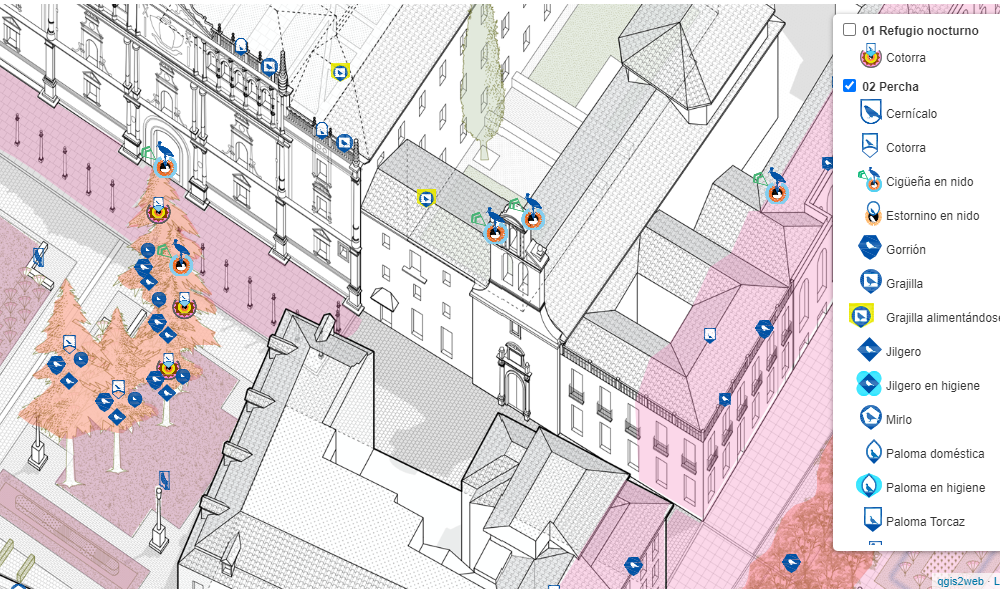
What services does the city offer animals? What kind of accommodations, activities, and possibilities does the city provide for biodiversity? Focused on three patches or work areas, and through a three-dimensional and interactive map, the project shows where they sleep, perch, feed, nest, take refuge, obtain material for nest-building, carry out their hygiene, where they usually drink, or interact with one another. A complex world of daily routines, an urban ecosystem full of invisible stories unknown to humans; magpies that follow cats, a mysterious thrush in the middle of the city, a jackdaw that manages to make a nest in a niche in a wall.
Within this framework, the project shows the possibilities of the city enclosed by Alcalá’s historical heritage. It explores how to be more hospitable without inventing anything new, but by leveraging, revitalizing, and carefully working on each of the existing corners and spatial particularities. For example, by enriching existing spatial narratives, taking advantage of the secret passages in the urban fabric, drawing on unique echoes of past architecture, and making green spaces fertile. With utmost care and respect, the research project explores how the city is, among many other things, an agent that enables coexistence among species.
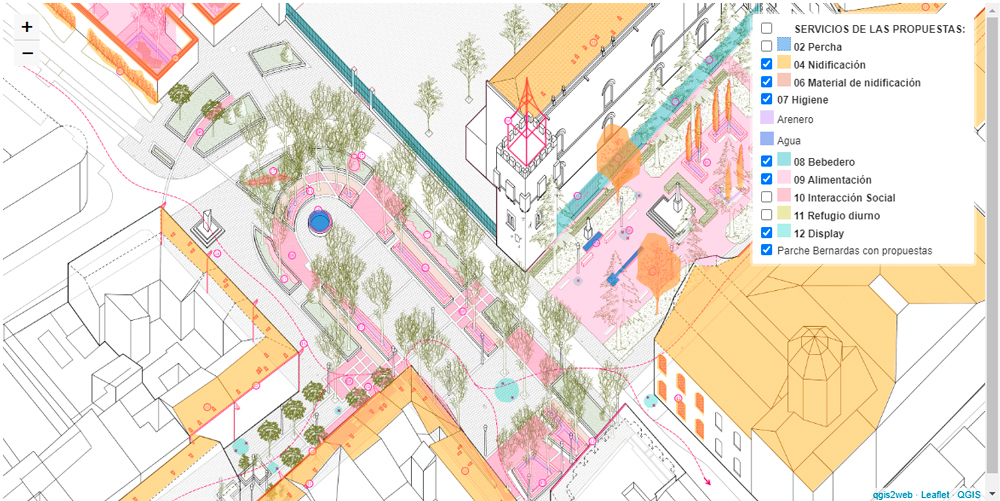
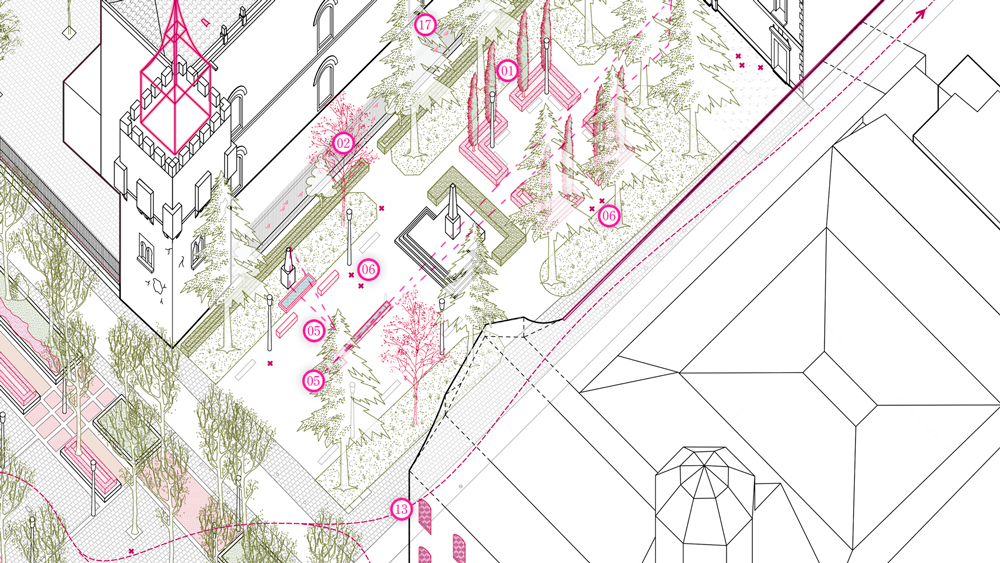
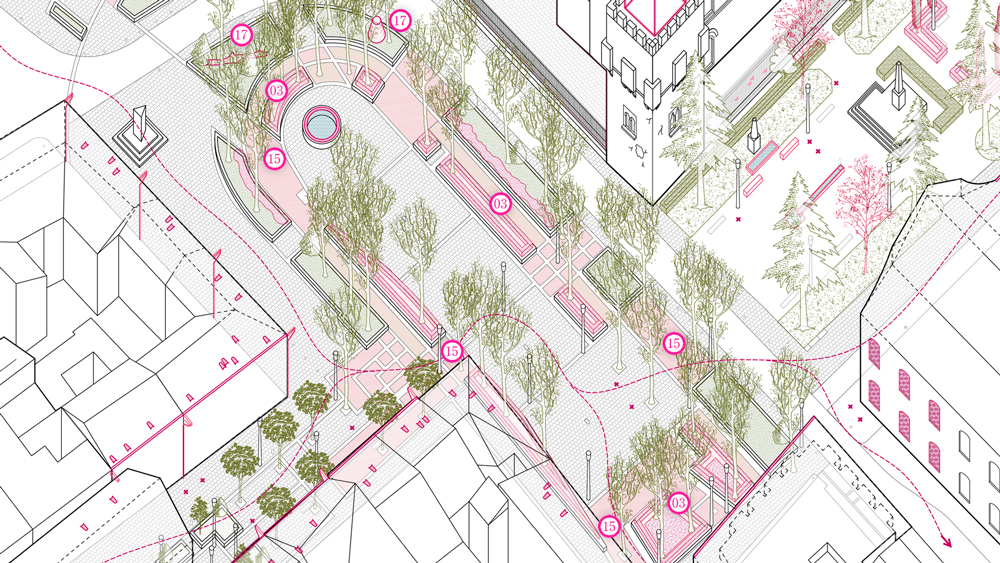
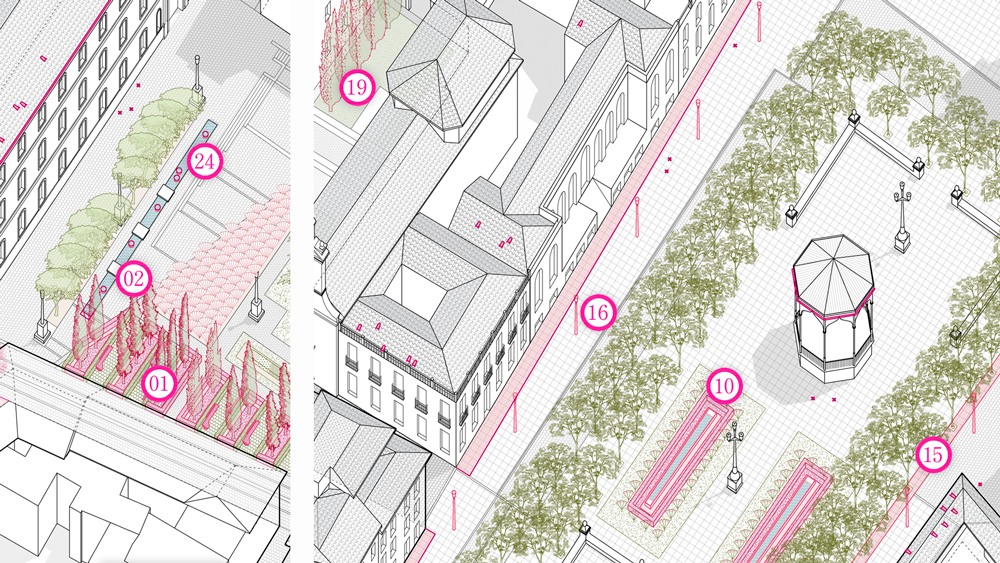
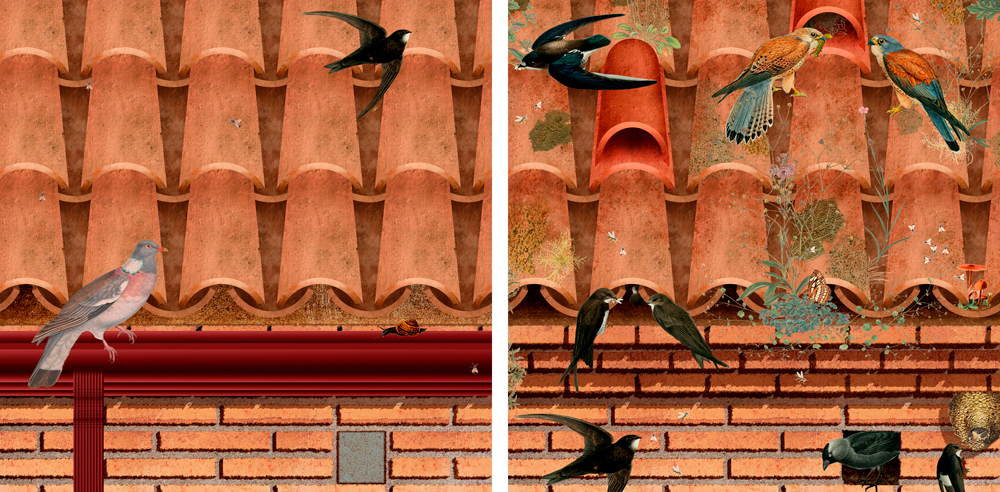
The project concludes this challenge with a question that is shared openly. What is the collective image we want for the city? For centuries, multiple species have been living with us on rooftops, roofs, facades, trees… However, our recent focus on architectural monuments and energy efficiency sometimes forgets the layering of other lives beyond the human. The current image of the city has been defined in a frozen, timeless state, as if the aseptic and the pristine were the ideal. The coexistence promoted by the project challenges this situation. Through comparisons between created images that represent generic but common scenes, the question is posed. Are we capable of embracing a collective urban image that is able to welcome different species? The goal is to work with a legacy not only of forms and volumes, but also of life and biodiversity.
